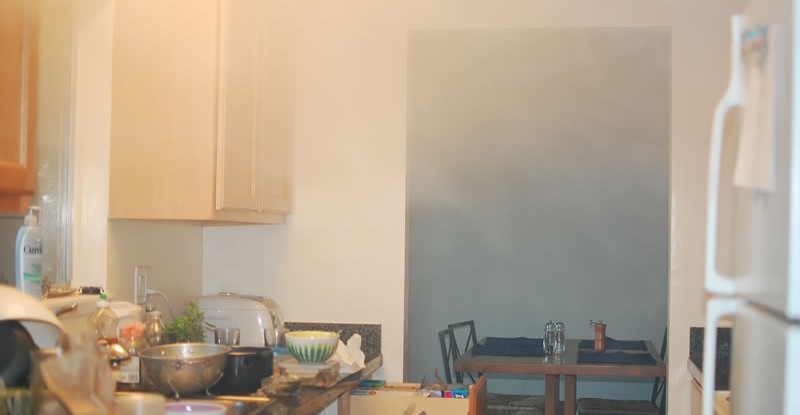Dear Jeff,
I’m not sure that this is a property question, but I feel it is connected.When we had a freestanding cooker and eyelevel grill with an extractor above, most fumes and heat were removed, but since we installed an electric double oven in the usual tall housing and a separate hob, only the hob has extraction over it. I often think this is wrong, as most heat, etc. is just dispersed into the kitchen. Often, when you open the top oven grill door, the kitchen is filled with fumes from grilling. Our unit is also built-in up to the ceiling which I’m sure doesn’t help.
Has something been overlooked in the design, or should some sort of extraction have been installed, although I would think that would be impossible with the built-in nature of the equipment.
It’s tempting to go back to a free-standing cooker for our next kitchen but it wouldn’t have the looks!!
When you talk about the “design” of your kitchen, I suggest you are being somewhat over-generous to the salesman who sold it to you.
Modern kitchen units are “modular”, meaning they come in standard widths (400mm or 600mm) and standard heights (600mm, 900mm and 1100mm). Built-in kitchen appliances are around 550mm to 560mm wide, so that they slide into the 600mm wide units.
All the kitchen salesman does is measure up the available space, and juggle a number of units around to fit into it. This used to be done by drawing on squared paper (and sometimes still is), but is now more often done on a laptop computer, which produces fancy drawings and 3D images. If the length or width of the room won’t allow for an exact number of 600mm and 400mm cupboard units, then you’ll end up with a wine rack or sliding tea-towel rail to fill in the space.
Salesmen are also fond of talking about the “work triangle”, which is the relative positions of the hob, sink and refrigerator. Exactly how you can position these three items in any configuration which is [ITALCS] not [italcs] a triangle is beyond me (even in a flat “galley” kitchen they will form a very obtuse triangle).
This juggling to fit things in – whilst avoiding existing doors and windows – can lead to some costly mistakes. The freezer right next to the oven is a classic – the freezer gets constantly defrosted and frozen again, and often pushes its own door open; it’s like having your own pet glacier.
The salesman is most unlikely to consider the importance of mechanical extraction. It is now generally understood that a cooker hood above the hob is a good idea, but if the juggling has left the hob against an inside wall, the salesman is quite likely to dispense with ducting this across to an outside wall, and instead suggest “re-circulating” the fumes through a carbon filter. All he wants to do is make the sale, not make life difficult for himself.
So yes, there is a problem with the “design” of a kitchen where the oven is a long way from an extractor fan. However, the best position for the cooker hood is above the hob, especially if it is a gas hob. This is not just to extract cooking smells, and steam from boiling saucepans, but because the gas itself produces water vapour and carbon dioxide (and maybe a bit of carbon monoxide too) when it burns. Every litre of natural gas produces two litres of water vapour (bottled gas produces at least twice as much as that), and this needs to be extracted to the outside – not allowed to percolate throughout the rest of the house, where it can cause condensation, mould growth, and mildew in the wardrobes.
Wherever the cooker hood is sited in relation to the built-in oven, it will still extract fumes and cooking smells, as long as the kitchen door is kept closed. There should be enough of a fresh-air inlet through the gap under the kitchen door. If you feel you need more mechanical extraction adjacent to the oven, and you have a conventional timber-and-plaster ceiling, then you might be able to fit a dedicated extractor fan in the ceiling, just in front of the oven door, with plastic ducting running between the joists to an outside wall.

